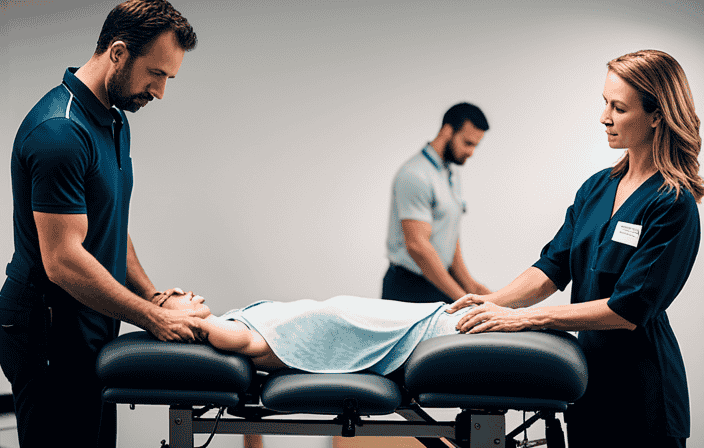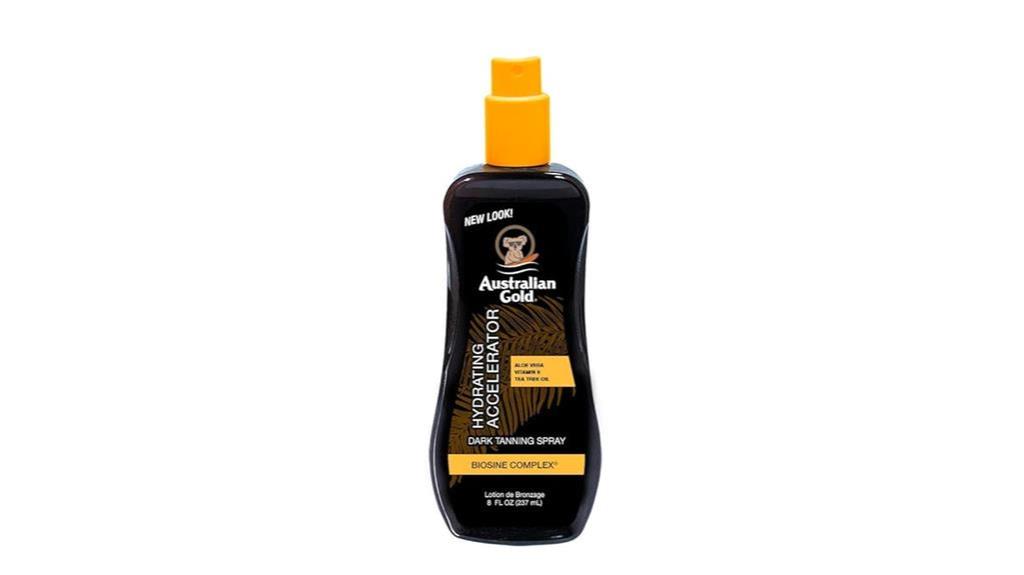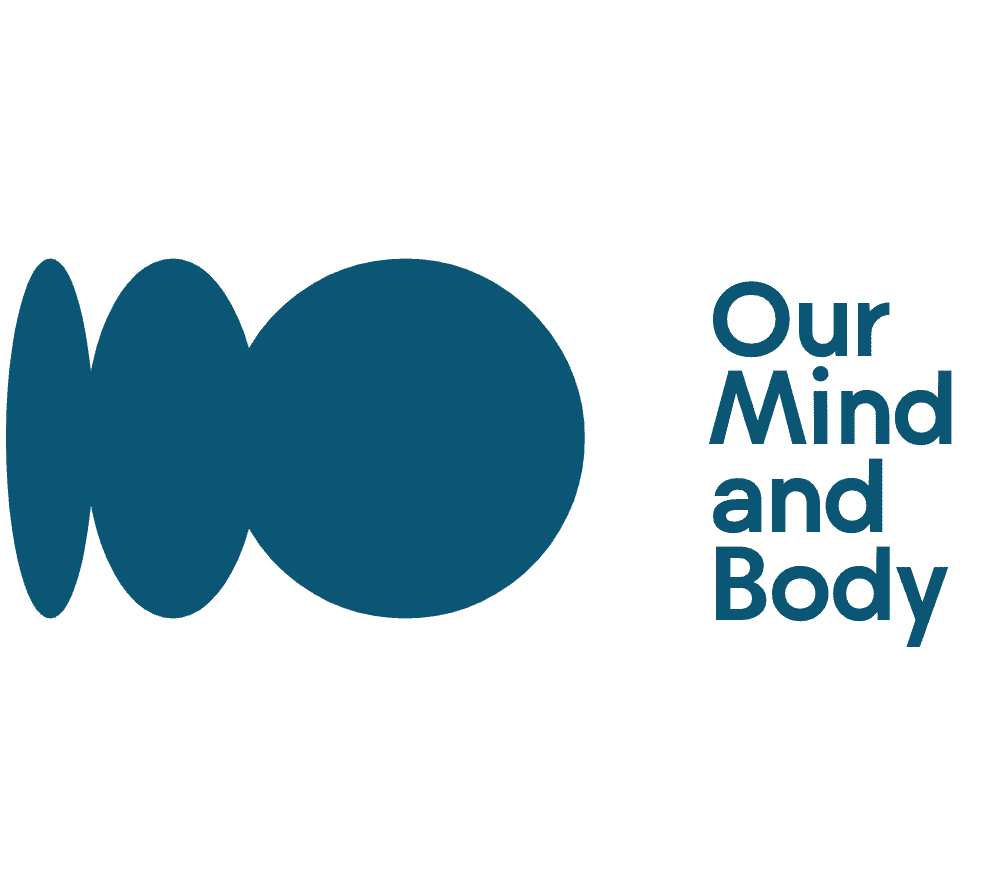Well-Being Tips
Chiropractic Care For Hypermobile Ehlers-Danlos Syndrome: A Comprehensive Approach

Do you have Hypermobile Ehlers-Danlos Syndrome (hEDS)? Searching for a solution to your joint hypermobility, musculoskeletal discomfort, and fragile tissues? Your search ends here!
In this article, we will explore the potential benefits of chiropractic care for hEDS. But first, let’s dive into what hEDS is, its causes, and how it affects your body.
Stay tuned for an in-depth analysis of how chiropractic care can provide a comprehensive approach to managing hEDS symptoms and improving your quality of life.
Key Takeaways
- Chiropractic care is a viable treatment option for individuals with hypermobile Ehlers-Danlos Syndrome (hEDS).
- Chiropractic treatment can help relieve joint flexibility and tissue fragility, leading to a decrease in pain and disability.
- Low-force chiropractic techniques are recommended for hEDS patients due to tissue fragility and flexible joints.
- A multidisciplinary approach involving various healthcare professionals is crucial for the management and prevention of complications in hEDS patients.
What is hEDS?
I know that hEDS, or Hypermobile Ehlers-Danlos Syndrome, is an inherited connective tissue disease caused by defective collagen protein. It is considered the least severe form of EDS, but it still has potential complications. The genetic cause of hEDS has not been identified yet, and it is inherited in an autosomal dominant manner.
Medical treatments for hEDS focus on preventive management strategies. hEDS is characterized by joint hypermobility in knees, elbows, toes, and fingers, frequent joint dislocations, overly smooth and elastic skin, easy bruising, and severe musculoskeletal pain. Females with hEDS also have an increased risk of pregnancy complications. It is important to consult a medical practitioner before starting any treatment.
Physical therapy and chiropractic care have both been found to be effective for hEDS. Approval from a professional is needed for chiropractic treatment, and low-force chiropractic techniques are recommended for hEDS patients due to tissue fragility and flexible joints. There have been no reports of harm or worsening symptoms in hEDS patients receiving chiropractic treatment. Chiropractic care has shown positive impacts on hEDS, including a decrease in pain and disability, reduction in the use of anti-inflammatory medicines and painkillers, and relief of joint flexibility and tissue fragility. It is considered a viable treatment option for hEDS according to studies. Chiropractic exercises, such as upper back stretches, gluteal stretches, and knees to chest exercises, can be beneficial for hEDS patients.
Preventive management strategies, along with other treatment options, early diagnosis, and intervention, are crucial for managing hEDS and preventing complications. Regular monitoring and follow-up, collaborative care involving multiple healthcare professionals, physical therapy, medications, assistive devices, lifestyle modifications, psychological support, and early identification are all important aspects of managing hEDS.
Continued research, genetic testing, and evaluation by specialists are needed to improve our understanding of hEDS and develop targeted therapies for symptom management.
Causes and Inheritance
The causes and inheritance of hEDS are not yet fully understood, as the specific genetic cause has not been identified. However, it is known that hEDS is an inherited connective tissue disease caused by defective collagen protein.
The inheritance pattern of hEDS is autosomal dominant, which means that a person only needs to inherit the defective gene from one parent to develop the condition.
It is important to note that hEDS is considered the least severe form of EDS, but it still has potential complications.
Further research is needed to identify the specific gene causing hEDS and to gain a better understanding of the underlying mechanisms of the condition.
Symptoms and Safety
Joint hypermobility is a common symptom of hEDS, along with frequent joint dislocations, smooth and elastic skin, severe musculoskeletal pain, and an increased risk of pregnancy complications for females. It is important for hEDS patients to prioritize their safety when considering chiropractic treatment.
Before starting any treatment, it is crucial to consult with a medical practitioner and obtain approval from a professional. However, there have been no reports of harm or worsening symptoms in hEDS patients who have undergone chiropractic care.
Low-force chiropractic techniques are recommended to accommodate the tissue fragility and flexible joints in hEDS patients. Research has shown positive impacts of chiropractic care on hEDS symptoms, including a decrease in pain and disability, and a reduction in the use of anti-inflammatory medicines and painkillers.
Chiropractic exercises, such as upper back stretches, gluteal stretches, and knees to chest exercises, can also be beneficial for hEDS patients.
Overall, chiropractic care can be a viable treatment option for hEDS when performed with caution and under professional supervision.
Consultation and Approval
Before starting chiropractic treatment for hEDS, it is important to consult with a medical practitioner and obtain approval from a professional.
Chiropractic care can be an effective treatment option for hEDS, but it is crucial to ensure the safety and suitability of this approach for individual patients. Since hEDS is a complex condition with potential complications, seeking medical advice is essential to determine if chiropractic care is appropriate and to discuss any potential risks or concerns.
A medical practitioner can assess the patient’s medical history, symptoms, and overall condition to provide informed guidance and referral to a qualified chiropractor. By obtaining approval from a professional, hEDS patients can have confidence in their treatment plan and ensure that it aligns with their specific needs and goals.
Positive Impact of Chiropractic Care
I personally experienced significant improvement in my pain and mobility after receiving chiropractic treatment for hEDS. Chiropractic care has been shown to have a positive impact on hEDS symptoms and can be a viable treatment option.
I found that chiropractic adjustments helped relieve joint flexibility and tissue fragility, which are common issues in hEDS patients. Additionally, studies have shown that chiropractic care can decrease pain and disability in EDS patients, allowing them to reduce their use of anti-inflammatory medications and painkillers.
The benefits of chiropractic care for hEDS patients are evident and can greatly improve their quality of life. It is important to note that chiropractic treatment for hEDS should be done under the approval and supervision of a professional, and low-force techniques are recommended to accommodate tissue fragility and flexible joints.
Chiropractic Exercises
After receiving chiropractic treatment for hEDS, I found that incorporating specific exercises into my routine helped improve my mobility and reduce pain.
One exercise that was particularly beneficial for me was the upper back stretch. I would sit down and hold my hands behind me with my palms facing away, and then I would lower my head and roll my upper back. This stretch helped to relieve tension and increase flexibility in my upper back and shoulders.
Another exercise that I found helpful was the gluteal stretch. I would lie down and place one ankle on the opposite knee while keeping my lower back pressed against the floor. This stretch helped to loosen tight muscles in my hips and buttocks.
Lastly, the knees to chest exercise was beneficial for me. I would lie down and bring both knees towards my chest while keeping my abdominal muscles stiff. This stretch helped to alleviate lower back pain and improve flexibility in my hips.
Overall, incorporating these chiropractic exercises into my routine has been a valuable addition to my treatment plan for hEDS.
Importance of Preventive Management
Implementing preventive management strategies is crucial for effectively managing hEDS and minimizing potential complications. As someone living with hEDS, I understand the importance of taking proactive steps to maintain my health and prevent further issues. Here are three key strategies that have been beneficial for me:
-
Regular check-ups and monitoring: By staying in close contact with my healthcare team, I can ensure that any changes or concerns are addressed promptly. This includes regular visits to my primary care physician, geneticist, and any specialists involved in my care.
-
Strengthening exercises and physical therapy: Working with a physical therapist who specializes in EDS has been instrumental in improving my joint stability and muscle strength. They have developed an individualized exercise program that targets my specific needs and helps prevent further dislocations or injuries.
-
Lifestyle modifications: Making small adjustments to my daily routine has had a significant impact on managing my symptoms. This includes maintaining a balanced diet, staying hydrated, avoiding activities that put excessive strain on my joints, and prioritizing rest and relaxation.
By incorporating these preventive management strategies into my daily life, I have been able to better manage my hEDS and minimize the risk of complications. It is important to work closely with healthcare professionals to develop a personalized plan that suits your specific needs and goals.
Other Treatment Options
Now that we have discussed the importance of preventive management for hypermobile Ehlers-Danlos Syndrome (hEDS), it is essential to explore other treatment options available for individuals with this condition.
Alongside medical treatments, there are various approaches that can help manage symptoms and improve the quality of life for hEDS patients. Physical therapy plays a crucial role in strengthening muscles and improving joint stability.
Medications can be prescribed to manage pain and provide symptom relief. Assistive devices such as braces or splints can support joints and enhance mobility. Additionally, lifestyle modifications, including regular exercise and a healthy diet, can have a positive impact.
Psychological support and counseling are also vital for individuals coping with chronic pain. By incorporating these treatment options into a comprehensive approach, healthcare professionals can work together to provide the best possible care for hEDS patients.
Early Diagnosis and Intervention
Early diagnosis and intervention is crucial in managing hEDS and preventing complications. Identifying hEDS early allows for timely management and implementation of preventive strategies. This can help alleviate symptoms and improve the overall quality of life for individuals with hEDS.
To ensure early diagnosis and intervention, it is important to consider the following:
-
Genetic testing and evaluation by specialists: Genetic testing can confirm the diagnosis of hEDS and help identify the specific gene causing the condition. Evaluation by specialists with expertise in connective tissue disorders is essential for accurate diagnosis and appropriate management.
-
Awareness of symptoms and family history: Being aware of the symptoms associated with hEDS and having knowledge of any family history of the condition can aid in early detection. Recognizing early signs and seeking medical attention promptly can lead to timely intervention.
By prioritizing early diagnosis and intervention, healthcare professionals can effectively manage hEDS and prevent complications, ultimately improving the outcomes and well-being of individuals with this condition.
Collaborative Care
Collaborating with a team of healthcare professionals allows for a holistic and personalized approach to managing hEDS. This condition requires a multidisciplinary approach involving various medical specialties to address the diverse symptoms and complications associated with hEDS. The collaborative care team may include geneticists, rheumatologists, physiotherapists, chiropractors, pain specialists, and psychologists, among others. Each healthcare professional brings their expertise to the table, working together to develop an individualized treatment plan that focuses on relieving symptoms, improving quality of life, and preventing complications. Regular monitoring and follow-up are essential to ensure the effectiveness of the treatment plan and make any necessary adjustments. The table below provides a visual representation of the different healthcare professionals involved in collaborative care for hEDS:
| Healthcare Professional | Role |
|---|---|
| Geneticist | Confirms diagnosis through genetic testing |
| Rheumatologist | Manages musculoskeletal symptoms and joint instability |
| Physiotherapist | Strengthens muscles and improves joint stability |
| Chiropractor | Provides low-force techniques for joint flexibility |
| Pain Specialist | Prescribes medications for pain management |
| Psychologist | Offers psychological support for coping with chronic pain |
Collaborative care ensures that hEDS patients receive comprehensive and integrated care, addressing all aspects of their condition. It promotes effective symptom management, improved quality of life, and a better understanding of the underlying mechanisms of hEDS.
Future Directions
In the future, I hope to see advancements in targeted therapies and a better understanding of the underlying mechanisms of hEDS. This would greatly benefit individuals with hypermobile Ehlers-Danlos Syndrome (hEDS) by providing more effective treatment options and improving their quality of life.
With a deeper understanding of the genetic cause of hEDS, researchers can develop targeted therapies that specifically address the defective collagen protein and its impact on connective tissue. This could lead to more targeted and personalized treatment approaches, ultimately improving symptom management and preventing complications.
Additionally, further research into the underlying mechanisms of hEDS can help identify new therapeutic targets and pathways for intervention. Collaboration between researchers, healthcare professionals, and patient advocacy groups will be crucial in driving these advancements and improving the lives of individuals with hEDS.
Frequently Asked Questions
Are there any specific chiropractic techniques or adjustments that should be avoided for hEDS patients?
There are no specific chiropractic techniques or adjustments that should be avoided for hEDS patients. However, it is important to use low-force techniques to account for tissue fragility and flexible joints.
Can chiropractic care completely cure or reverse the symptoms of hEDS?
No, chiropractic care cannot completely cure or reverse the symptoms of hEDS. However, it can help manage symptoms and improve quality of life by relieving pain, increasing joint flexibility, and strengthening muscles.
Is chiropractic care safe for hEDS patients with severe joint instability or dislocations?
Chiropractic care is generally safe for hEDS patients with severe joint instability or dislocations. It is important to consult with a medical practitioner and obtain approval from a professional before starting treatment. Low-force chiropractic techniques are recommended to accommodate tissue fragility and flexible joints.
How often should hEDS patients receive chiropractic treatments for optimal results?
Based on current guidelines, hEDS patients should receive chiropractic treatments on an as-needed basis. There is no specific frequency recommended, as it depends on individual symptoms and response to treatment.
Can chiropractic care help with the management of other symptoms commonly experienced by hEDS patients, such as gastrointestinal issues or fatigue?
Yes, chiropractic care can help with the management of other symptoms commonly experienced by hEDS patients, such as gastrointestinal issues and fatigue. It provides relief by addressing musculoskeletal imbalances and promoting overall wellness.
Conclusion
In conclusion, chiropractic care offers a comprehensive approach to managing the symptoms of hEDS. Its low-force techniques and focus on joint flexibility and stability provide relief for musculoskeletal pain and improve patients’ quality of life. Collaborative care involving multiple healthcare professionals, early diagnosis, and intervention are essential in effectively managing hEDS. By working together and continuing research, we can ensure that individuals with hEDS receive the preventive management strategies and support they need to thrive.
Like a symphony of healthcare professionals, let us harmonize our efforts to create a better future for hEDS patients.
Say hello to Cypress, the soulful wordsmith behind the insightful articles at OurMindAndBody.com. Cypress is a gifted writer who weaves words with grace and precision, using language as a powerful tool to inspire, heal, and uplift the spirits of readers.
With a background in literature and a passion for personal growth, Cypress brings a unique perspective to the world of well-being and spirituality. Having experienced the transformative effects of meditation and yoga firsthand, Cypress is deeply connected to the essence of these practices and their potential to enrich lives.
Well-Being Tips
Top 6 Tanning Products for Radiant Summer Skin

As the summer sun beckons, it’s time to achieve that perfect golden glow. Whether you’re looking for a natural tan or a faux glow, we’ve rounded up the best tanning products to help you get summer-ready skin. Let’s dive into Tanning Trends’ top picks for achieving a beautiful, bronzed complexion!
1. Carroten Intensive Tanning Gel SPF0: The Ultimate Accelerator
For those seeking a deep, flawless tan without the greasiness, Carroten Intensive Tanning Gel SPF0 is a game-changer. This lightweight gel absorbs quickly and is suitable for all skin types.

- 150 ml / 5 oz size
- Contains antioxidant vitamins A and E
- Pleasant fragrance
- Perfect for: achieving tanned skin
Pro tip: Apply evenly and reapply as needed for best results. Remember, SPF0 means no sun protection, so use with caution and consider additional sun protection measures.
2. Hawaiian Tropic Island Tanning Oil Spray: Tropical Paradise in a Bottle
Transport yourself to a tropical paradise with Hawaiian Tropic Island Tanning Oil Spray. This tanning oil not only helps you achieve a golden glow but also provides SPF 6 protection and moisturizing benefits.

- 8 oz size
- Oxybenzone-free formula
- Moisturizing body oil
- Ideal for: sun protection while tanning
For those who prefer more sun protection, consider the Hawaiian Tropic Protective Tanning Oil Spray with SPF 25, which offers higher UV protection and is water-resistant for up to 80 minutes.
3. Tan Physics Sunless Tanner: Faux Glow Perfection
If you’re looking for a sunless tanning option, Tan Physics Sunless Tanner is an excellent choice for achieving a natural-looking tan without sun exposure.

- 8 oz bottle
- Streak-free formula
- Develops natural-looking color
- Great alternative for: those who prefer sunless tanning
To achieve the best results, exfoliate your skin before application and use a tanning mitt for even distribution.
4. Golden Skin Glow Drops: Customizable Radiance
For a versatile tanning option that can be used year-round, try the Golden Skin Glow Drops. These liquid bronzing drops allow you to customize your glow by mixing them with your favorite moisturizer or foundation.

- 1.35 oz bottle
- Vegan and cruelty-free
- Translucent bronzing tint
- Perfect for year-round use: incorporate into your daily skincare routine
Experiment with different ratios to find your perfect glow intensity. These drops are great for both face and body use.
5. Australian Gold Dark Tanning Accelerator Spray Gel: Quick Color Boost
For those looking to speed up their tanning process, the Australian Gold Dark Tanning Accelerator Spray Gel is a fantastic option. This product intensifies color payoff and promotes a golden tan after just a few sessions.

- 8 ounce spray gel
- Contains Kakadu Plum extract and Tea Tree Oil
- Nourishes skin with Vitamins A and E
- Ideal for speeding up your tan: learn more about tanning accelerators
This product can be used for both indoor and outdoor tanning, making it a versatile addition to your tanning routine.
6. Sun Bum SPF 15 Moisturizing Tanning Oil: Responsible Bronzing
For those who want to tan responsibly while keeping their skin hydrated, Sun Bum SPF 15 Moisturizing Tanning Oil is an excellent choice. This reef-friendly formula provides sun protection while helping you achieve a beautiful bronze.

- 8.5 oz size
- Vegan formula
- Contains aloe vera, argan oil, and coconut oil
- Best for environmentally conscious tanners
This water-resistant formula is perfect for beach days or poolside tanning sessions.
Carroten Gel
Deep, quick tan
Hawaiian Tropic
Moisturizing tan
Tan Physics
Sunless tanning
Sun Bum Oil
Eco-friendly tanning
Conclusion: Achieving Your Perfect Summer Glow
Whether you prefer natural tanning, sunless options, or a combination of both, there’s a perfect product out there for everyone. Remember to always prioritize skin health and safety when tanning. Start with shorter exposure times and gradually increase to build your tan safely.
For more tips on achieving and maintaining your perfect tan, check out Tanning Trends’ lifestyle tips section. And don’t forget to explore Tanning Trends’ sun protection guide to ensure you’re taking care of your skin while enjoying that beautiful golden glow.
Happy tanning, and here’s to a radiant, sun-kissed summer!
Meet Nadi, the soulful writer and explorer of inner realms who graces OurMindAndBody.com with her profound insights and heartfelt wisdom. With a profound passion for mindfulness, meditation, and spiritual growth, Nadi weaves words that touch the hearts and minds of readers, leaving a lasting impact on their well-being journey.
Rooted in a background of philosophy and psychology, Nadi’s curiosity about the human mind and the mysteries of the soul led her on a transformative path of self-discovery. Drawn to the transformative power of mindfulness and meditation, she embarked on a quest to understand the intricacies of these practices, not only for her own growth but also to inspire others to embark on their own inner journeys.
Well-Being Tips
Making A Stress-Free Transition To Assisted Living: Involving Your Loved One, Choosing A Facility, Celebrating The Change, And Overcoming Obstacles

Are you or a family member dealing with the challenging transition to assisted living? It may seem like sailing through rough waters, but don’t worry! I am here to help you navigate towards a smooth and stress-free journey.
Picture this: a smooth sail where you involve your loved one every step of the way, choose the perfect facility tailored to their needs, celebrate the change together, and overcome any obstacles that come your way.
Together, let’s embark on this adventure and make the transition a breeze.
Key Takeaways
- Involving your loved one in decision-making and maintaining contact
- Choosing a facility and downsizing with their needs and preferences in mind
- Celebrating the transition and getting others involved for support
- Being prepared for obstacles and embracing the process as part of the journey
Involvement in decision-making
I involve my loved one in all aspects of the transition to assisted living. I treat them with respect, ensuring they feel valued and heard. I discuss any stressful situations openly.
Including family members in the decision-making process is crucial. It makes them feel involved and empowered. I listen to their concerns, desires, and preferences. I consider them when making choices about the facility.
Communication plays a vital role in this process. It helps us understand each other’s needs and expectations. Regular conversations and updates keep everyone informed and involved.
I make sure to actively listen, validate their feelings, and address any worries or fears they may have. By involving my loved one and prioritizing open communication, we can work together to make the transition to assisted living as stress-free as possible.
Choosing a facility
When selecting a facility for my loved one, I will create a checklist that takes into account their specific needs and preferences. This checklist will help me compare amenities and evaluate staff expertise. It is important to consider the activities and features offered by the facility, as well as the quality and variety of food provided. I want my loved one to have access to a range of activities that align with their interests and hobbies. Additionally, I will prioritize a facility with well-trained and compassionate staff who can provide the necessary support and care. By carefully considering these factors, I can ensure that my loved one will feel comfortable and well-cared for in their new home.
| Amenities | Staff Expertise |
|---|---|
| Beautiful outdoor spaces | Qualified nurses and caregivers |
| Well-equipped fitness center | Specialized memory care programs |
| On-site salon and spa | 24/7 medical assistance |
| Delicious and nutritious meals | Supportive and compassionate staff |
| Pet-friendly environment | Regular staff training and development |
Celebrating the transition
To commemorate my loved one’s move to assisted living, we can plan a special event that brings together family and friends. A moving-in celebration will not only mark this important milestone but also help ease any anxiety or apprehension they may have about the transition.
Here are three ideas to make the celebration memorable and meaningful:
-
Decorate their new living space: Fill their new home with familiar items, photos, and decorations that reflect their personality and create a warm and welcoming atmosphere.
-
Share stories and memories: Encourage family and friends to share stories, memories, and well-wishes during the celebration. This will remind your loved one of the love and support they have from their community.
-
Plan a favorite meal: Prepare a special meal or order their favorite food to enjoy together. Sharing a delicious meal can create a sense of comfort and familiarity, making the new surroundings feel more like home.
By organizing a moving-in celebration, we can show our loved one that they are not alone in this transition and that we are there to support and celebrate this new chapter in their life. Managing anxiety becomes easier when surrounded by loved ones and positive energy.
Being prepared for obstacles
Preparing for potential challenges is crucial when transitioning to assisted living. Embracing challenges with a positive mindset can greatly contribute to a stress-free experience.
It’s important to understand that obstacles may arise, but accepting them without frustration is key. By embracing the process as part of the journey, both you and your loved one can adapt more easily to the new environment.
Implementing strategies for stress reduction is also essential. Take time to explore steps to live a stress-free life, such as practicing relaxation techniques, engaging in enjoyable activities, and maintaining a support system.
Additionally, creating a routine and establishing a sense of familiarity can help alleviate anxiety. Remember, with proper preparation and a proactive approach, you can navigate any obstacle with grace and ensure a smooth transition to assisted living.
Dating and gambling addiction consequences
Navigating the challenges of dating and understanding the consequences of gambling addiction can be difficult, but I’m committed to seeking support and resources for both the addict and their loved ones.
When it comes to approaching dating without stress, communication and boundaries are key. It’s important to be open and honest about your expectations and needs, while also respecting the other person’s boundaries. Taking the time to get to know each other and building a foundation of trust can help alleviate stress in the dating process.
Supporting loved ones with gambling addiction requires a compassionate and understanding approach. It’s crucial to educate yourself about the addiction and its impact on relationships. Encourage your loved one to seek professional help and attend support groups. Offering emotional support and being there to listen without judgment can make a significant difference. Additionally, don’t forget to take care of yourself by setting boundaries and seeking support for your own well-being.
Remember, with the right resources and a supportive network, both dating and dealing with gambling addiction can become more manageable.
Frequently Asked Questions
How can I involve my loved one in decision-making without overwhelming them?
To involve my loved one in decision-making without overwhelming them, I balance their wishes and needs by listening to their preferences, concerns, and fears. I empower them in the process by providing information, options, and support.
What should I consider when choosing a facility for my loved one’s assisted living?
When choosing a facility for my loved one’s assisted living, I consider two important factors: location and amenities. The location should be convenient for visits, and the amenities should meet their needs and preferences.
How can I celebrate my loved one’s transition to assisted living in a meaningful way?
For a meaningful celebration of your loved one’s transition to assisted living, consider hosting a moving-in party with friends and family. Decorate their new space, prepare their favorite foods, and create a welcoming environment to ease their adjustment.
What are some common obstacles that may arise during the transition to assisted living, and how can I prepare for them?
Loneliness and managing medical needs can be common obstacles during the transition to assisted living. To prepare, encourage social engagement, provide emotional support, and ensure healthcare coordination. Remember, you’re not alone in this journey.
How can I support a loved one who is struggling with gambling addiction while they are in assisted living?
To support a loved one struggling with gambling addiction in assisted living, it’s important to maintain boundaries. Encourage them to seek professional help, provide emotional support, and connect them with support groups or resources to aid in their recovery journey.
Conclusion
In conclusion, embarking on a stress-free transition to assisted living is an important journey that requires careful consideration and planning.
By involving your loved one in decision-making and treating them with respect, you can ensure their voice is heard and valued.
Choosing the right facility, celebrating the change, and being prepared for obstacles are all essential steps in this process.
Remember to embrace the journey and implement strategies to reduce stress levels along the way.
By doing so, you can create a smooth and positive transition for your loved one.
Meet Kiran, the guiding light of wisdom behind the empowering content at OurMindAndBody.com. As a talented and compassionate writer, Kiran weaves words with grace and insight, sharing profound knowledge and practical advice to inspire positive transformations in the lives of readers.
With a background in psychology and a deep-rooted passion for well-being, Kiran brings a unique blend of expertise and empathy to her writing. Her journey into the realm of mindfulness, meditation, and yoga began as a personal quest for self-discovery and healing. Having experienced the profound benefits of these practices firsthand, Kiran is committed to empowering others to embark on their own journeys of self-exploration and growth.
Well-Being Tips
Relaxation Techniques: Unwind And Recharge For Stress Relief

Are you ever feeling stressed and in need of some relaxation? I know I certainly am. Life can be hectic, and stress always seems to be around. But don’t worry, because I have some fantastic news for you.
There are a variety of relaxation techniques that can help you unwind and recharge, providing much-needed stress relief. From breathing exercises and meditation to the power of music and engaging in physical activity, these techniques have been proven to be effective in promoting relaxation and improving mental well-being.
So let’s dive in and explore these techniques together.
Key Takeaways
- Breathing techniques and meditation can effectively relieve stress and exhaustion, reducing the risk of cardiovascular disease.
- Consider exploring psychedelics for relaxation, but always prioritize safety and adequate support.
- Music has a calming effect on the mind and body, instantly lowering stress levels.
- Engaging in physical activity, such as aerobic exercises, can help relax and relieve stress by reducing stress hormone levels in the body.
Breathing Exercises
I find breathing exercises to be a helpful and effective technique for relieving stress and exhaustion. Deep breathing has numerous benefits, including reducing stress levels and promoting relaxation.
When we take slow and deep breaths, it triggers the body’s relaxation response, lowering heart rate and blood pressure. One effective breathing technique is to breathe in on the count of three, then breathe out following the same pattern. Placing a hand on your belly can help you feel it rise and fall, enhancing the calming effect.
Incorporating breathing exercises into my daily routine has been proven to reduce the risk of cardiovascular disease and alleviate stress levels. The best part is that it can be done almost anywhere, making it easily accessible for anyone seeking relaxation and stress relief.
Meditation
Meditation is an effective way to alleviate stress and promote relaxation. Regular meditation practice can bring numerous benefits to our mental and physical well-being. Here are some key benefits of incorporating meditation into your daily routine:
-
Improved focus and concentration: Meditation helps train our minds to stay present and focused, enhancing our ability to concentrate on tasks.
-
Reduced anxiety and depression: Studies have shown that meditation can reduce symptoms of anxiety and depression, providing relief and promoting a sense of calm.
-
Increased self-awareness: Through meditation, we can develop a deeper understanding of ourselves, our emotions, and our thoughts, leading to greater self-acceptance and self-growth.
-
Enhanced overall well-being: Regular meditation practice has been linked to improved sleep, reduced blood pressure, and a strengthened immune system.
When it comes to meditation, there are various techniques to choose from, such as mindfulness meditation, loving-kindness meditation, and transcendental meditation. It’s important to explore different techniques and find the one that resonates with you the most.
So, take a few moments each day to sit in a quiet place, close your eyes, and allow yourself to experience the benefits of meditation.
Psychedelics
Consider exploring the potential benefits and risks of psychedelics as a way to promote relaxation and find an alternative approach to managing stress and exhaustion.
While it is important to approach psychedelics with caution and seek adequate support, some individuals have found them useful as a relaxation technique.
The therapeutic potential of psychedelics is being increasingly recognized, with studies suggesting their effectiveness in treating mental health conditions such as depression, anxiety, and PTSD.
However, it is crucial to note that the use of psychedelics should be done in a safe and controlled environment, under the guidance of experienced professionals.
Understanding the risks and potential benefits, as well as conducting thorough research, is essential before considering this approach.
It is important to prioritize your well-being and mental health, exploring different techniques and activities that work best for you.
Music
Listening to my favorite songs and singing along instantly calms my mind and body, helping me lower my stress levels.
Music therapy has been shown to have numerous benefits for relaxation and stress relief. Different genres of music can evoke different emotions and have varying effects on the body and mind.
Soft, slow-paced music, such as classical or instrumental tracks, can induce a sense of tranquility and promote deep relaxation. Upbeat and energetic music, like pop or rock, can uplift mood and provide an outlet for releasing tension.
Creating a playlist of favorite songs and taking a few minutes daily to immerse myself in the music helps me unwind and recharge. Whether it’s soothing melodies or catchy tunes, music has the power to rejuvenate and provide a much-needed escape from stress.
Physical Activity
Exercising is an effective way for me to relax and relieve stress. Whether it’s going for a brisk walk, practicing yoga, or hitting the gym, physical activity always helps me unwind and recharge. Not only does it boost my mood and energy levels, but it also has numerous benefits for my overall well-being. One activity that I particularly enjoy is swimming. Not only does it provide a full-body workout, but it also has amazing relaxation benefits. Swimming improves my sleep quality, lowers my anxiety levels, and reduces stress. It’s a great way to escape from the daily hustle and bustle and find peace in the water. Plus, I love how it allows me to disconnect from technology and focus on my breathing and movements. Overall, finding activities that help me relax and relieve stress is essential. Everyone’s preferences are different, so it’s important to personalize your relaxation techniques and prioritize self-care in your daily routine.
| Benefit | Description | Emotional Response |
|---|---|---|
| Improved Sleep | Swimming helps improve the quality of sleep, allowing for a more restful and rejuvenating night’s rest. | Relaxation |
| Reduced Anxiety | Engaging in swimming can lower anxiety levels, promoting a sense of calm and tranquility. | Peaceful |
| Stress Reduction | Swimming has a unique ability to reduce stress and tension, leaving you feeling more relaxed. | Relief |
| Physical Workout | Swimming provides a full-body workout, toning muscles and improving cardiovascular health. | Energized |
| Mental Focus | While swimming, the focus on breathing and movements helps clear the mind and achieve mental clarity. | Serenity |
Massage and Nature
After exploring the benefits of physical activity for relaxation and stress relief, let’s dive into the next technique: massage and nature.
Massage therapy has been proven to be an effective way to reduce stress levels and promote relaxation. It lowers cortisol levels in the body and increases serotonin, which helps reduce anxiety and depression. Getting a massage can be a wonderful excuse to take a break and rejuvenate when you’re feeling stressed and exhausted.
Additionally, immersing yourself in nature can have a profound calming effect. Whether it’s taking a leisurely walk in a park or simply gazing at images of nature, the healing power of nature can help you unwind and recharge. Nature has been shown to reduce stress levels and provide a sense of tranquility.
So, consider incorporating massage therapy and connecting with nature into your relaxation routine for a truly rejuvenating experience.
Finding Activities
I enjoy exploring different activities to find what helps me relax and relieve stress. Personalized relaxation techniques are crucial for me because what works for others may not work for me. It’s important to prioritize self-care and find what truly helps me unwind and recharge.
Whether it’s reading a book, taking a long bath, or practicing mindfulness, I make sure to incorporate these activities into my daily routine. Taking the time for self-care is essential for my overall well-being and mental health.
I have found that by experimenting and discovering what works best for me, I am able to effectively manage stress and exhaustion. So, I encourage everyone to prioritize their own well-being and find their own personalized relaxation techniques.
Frequently Asked Questions
Are there any risks or side effects associated with practicing breathing exercises and meditation?
Yes, there are minimal risks and side effects associated with practicing breathing exercises and meditation. These may include lightheadedness, dizziness, or discomfort. However, when done correctly and in moderation, the benefits far outweigh any potential risks.
Can psychedelics be used as a long-term solution for relaxation and stress relief?
Psychedelic therapy, including microdosing therapy, has shown promise in reducing stress and promoting relaxation. While more research is needed, early studies suggest that psychedelics may have long-term benefits for stress relief when used in a controlled and supported environment.
How does music impact the brain and contribute to relaxation?
Music therapy creates a harmonious symphony within our minds, deeply connecting the mind and body. It stimulates neural pathways, releasing dopamine and reducing cortisol levels, promoting relaxation and reducing stress.
What are some alternative physical activities that can be done for relaxation if swimming is not an option?
If swimming is not an option, there are several alternative physical activities that can be done for relaxation. Some options include yoga, tai chi, hiking, dancing, and bike riding. These activities can help reduce stress and promote relaxation.
How can one effectively incorporate nature into their daily routine for relaxation purposes?
To effectively incorporate nature into your daily routine, take exaggeratedly long nature walks that last for hours. Engage in outdoor yoga sessions surrounded by the beauty of the natural world. Immerse yourself in the calming and rejuvenating effects of nature.
Conclusion
In conclusion, incorporating relaxation techniques into our daily routine is crucial for managing stress and promoting overall well-being. By practicing breathing exercises, meditation, and engaging in physical activity, we can effectively reduce stress levels and improve our mental health.
Exploring the use of psychedelics, safely and with support, can also offer a unique experience for relaxation. Additionally, immersing ourselves in music, massage, and nature can instantly calm the mind and body.
So why wait? Start prioritizing self-care and discover the power of relaxation today.
Meet Kiran, the guiding light of wisdom behind the empowering content at OurMindAndBody.com. As a talented and compassionate writer, Kiran weaves words with grace and insight, sharing profound knowledge and practical advice to inspire positive transformations in the lives of readers.
With a background in psychology and a deep-rooted passion for well-being, Kiran brings a unique blend of expertise and empathy to her writing. Her journey into the realm of mindfulness, meditation, and yoga began as a personal quest for self-discovery and healing. Having experienced the profound benefits of these practices firsthand, Kiran is committed to empowering others to embark on their own journeys of self-exploration and growth.
-

 Personal Growth2 months ago
Personal Growth2 months agoThe Power Of Kindness: Cultivating Happiness, Connection, And Personal Growth
-

 Meditation1 day ago
Meditation1 day agoUnderstanding Spiritual Attacks: Types, Signs, And Protection
-

 Aura1 week ago
Aura1 week agoUnderstanding The Grey Aura: Balance, Neutrality, And Personal Growth
-

 Spirituality3 months ago
Spirituality3 months agoThe Power Of Spiritual Connection: Definition, Importance, And Ways To Achieve
-

 Spirituality2 months ago
Spirituality2 months agoStarting Your Spiritual Journey: Self-Reflection, Growth, And Connection
-

 Spirituality3 months ago
Spirituality3 months agoConnecting Spirituality And Daily Life: Embracing Universal Values
-

 Spirituality3 months ago
Spirituality3 months agoThe Mystical Realms: Exploring Spiritual Dimensions
-

 Meditation3 weeks ago
Meditation3 weeks agoThe Symbolic Significance Of Sand Dollar: Spiritual Meanings And Cultural Connections




















